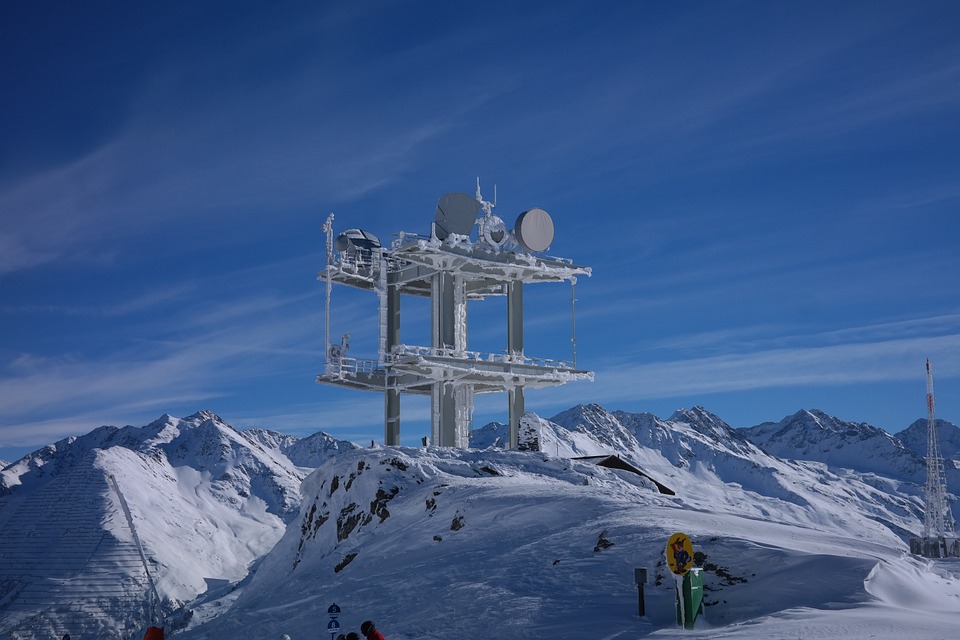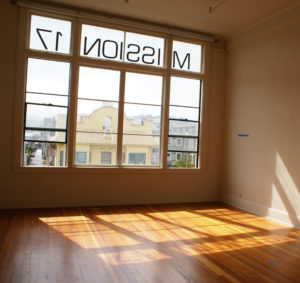Five and a Half Years of Art in San Francisco
This piece was published as the Introduction to MISSION 17: 2004 – 2009, a catalog documenting the history of exhibtions at the gallery, MISSION 17, where I worked as Director / Curator. It can be cited here as: Buckner, Clark. “Five and a Half Years of Art in San Francisco.” www.clarkbuckner.com. Web. Day, Month, Year article as accessed.
MISSION 17 opened in the wake of the dot-com boom and originally aimed to redress the cultural crisis that it had caused in San Francisco—specifically through the widespread closing of space for artists.
The gallery first developed out of The Blue Studio, a for-profit subleasing company run by Michael Latronica that provides workspace to artists. Originally, The Blue Studio was located in a 3,000 sq. ft. space at 3rd and Townsend in San Francisco’s SOMA district. I had a studio there where I was writing my dissertation for a degree in philosophy, and pursuing my own art projects. Like so many other art spaces in the city, we were under constant threat of eviction by landlords who hoped to get a piece of the fast money that was flowing into the Bay Area to fund start-up companies for the emerging internet economy. When the dot-com boom went bust, Michael began looking for new space and found a 16,000 sq. ft. venue on the corner of Mission and 17th St. He needed someone to assume responsibility for the lease and to help capitalize the project, so he asked me to become his partner in the business. We built out the space with roughly 25 studios, which frequently are shared by multiple artists, and found ourselves with enough residual space to devote some of it to a gallery.
The opportunity seemed particularly ripe to me for several reasons. Approaching the end of my career as a graduate student in philosophy, I felt very isolated in my work. Working at The Blue Studio and participating in its open studios exhibitions already had given me a taste of the pleasure of engaging with the local art community, and I wanted more. Also I had grown disillusioned with the narrow mindedness and poverty of academic philosophy departments, and I wanted to stay in San Francisco (or another, similarly cosmopolitan city), rather than shuffling off to the anywhere U.S.A. in pursuit of a purportedly prestigious teaching job. The art world seemed to me to present the opportunity to purse the kinds of questions that had motivated my studies in philosophy, but in an active, public way. In fact, I had long been interested in ideology critique as a social practice, and my growing commitment to psychoanalysis, in particular, lead me to believe that significant personal and social changes could only be effected through practical engagements with desire.
The San Francisco art scene, specifically, seemed to provide an exceptional opportunity to engage this intersection of art, social practice, ideology, and desire. As distinct from New York City, where I grew up, San Francisco has a fairly limited art market; and, although local artists are engaged with developments in national and international culture, art in San Francisco often has been connected to the personal and social experiments for which the city is famous. In particular, I took as my models the longstanding alternative spaces that had developed in the 1960s and 1970s, such as New Langton Arts, SF Camerawork, Intersection for the Arts, and Southern Exposure. Our new space was located very close to the latter two, as well as to other excellent venues for local art, dance, and theater, which had survived the dot-com era, including Adobe Books, Jack Hanley Gallery, Cell Space, ODC, The Mission Cultural Center, Build, Femina Potens, Balazoo, and Dance Mission. I drew inspiration from this community and wanted to contribute to it.
When I began to organize exhibitions at MISSION 17, my first challenge was to find artists who were doing excellent work, but had not yet become so well established that they had plenty of opportunities to show their work and might not be willing to exhibit at a new, local, not-for-profit gallery. The first artist I exhibited, Chris Dorosz, proved to be an excellent candidate. His work was well developed, and he already had a successful career—but in Canada, where he came from and had commercial representation. Locally, his work was hardly known at all. Subsequently, I simply hustled to track down artists through group shows and studio visits. And soon I found that even more established artists were not only willing, but also interested in showing at the gallery, particularly because it provided them with an opportunity to mount ambitious, large-scale projects, that other venues rarely afforded them.
My own aesthetic interests frequently tend towards such large-scale sculpture and installation projects, which employ diverse, eccentric media and involve some form of performance on the part of either the artist or the audience. Despite their obvious differences, many of the best solo projects mounted at MISSION 17, along with much of the work included in the gallery’s better group shows, can be marshaled together in this light, including Jason Mortara’s First Artist on Mars, Taro Hattori and Mayumi Hamanaka’s Happy Pack, Tucker Nichols’ Together We Can Prevent Earthquakes, Sirpa Jokinen’s Places, Sounds, Words, Michael Zheng’s As the Butterfly Said to Chuang Tzu, and Gigi Janchang’s Above Under Glass.
Video work also developed as a central component of MISSION 17’s programming and, along with Julia Page’s We All Must Play Our Parts, the gallery was transformed from a white cube to a black box for such shows as Scott Kildall’s Imaginary Souvenirs, David Kwan’s Emergence, and imPOSSIBLE!: Eight Chinese Artists Engage Absurdity, an exhibition of contemporary Chinese video art mounted in conjunction with The San Francisco Arts Commission Gallery and The Chinese Cultural Center.
Frequently exhibitions mounted at MISSION 17 complicated the boundaries between the gallery and its immediate surroundings, at times including extra-artistic phenomenon, such as Katherine McInnis’ As Is, which featured objects produced with “great finds” from the thrift store in the same building. And we seized upon this tendency—in our program and in contemporary art more generally—to test the boundaries of curatorial practice in such shows as A Vlog Is A Vlog, which featured re-mixed amateur video, culled from the internet, and in our innovative Visual / Cultural Criticism Residency, which featured shows produced by non-artists, such as cultural critic Karin Smith’s Jonestown Had A Garden, and poet David Buuck’s 17 Reasons Why: A Visual Archeology.
Ideology critique provided another consistent focal point in our program, as exemplified by Jonathan Tellier’s E Pluribus Unam, Ryan Alexiev’s The Land of a Million Cereals, and Cheryl Meeker’s Depleted Selves. And in our annual juried shows, we focused on the politics of aesthetics by formulating themes that had immediate implications for both classical aesthetics and contemporary social issues. This gave license to our juries to select work based on a broad range of considerations—from the formally virtuous to the thematically on point—and it generated exhibitions in which aesthetic concerns were complicated directly and, at times, indistinguishably from politics. These included: By Any Means UnNecessary, Truth and Lies, Anti/Social (our response to relational aesthetics), I.O.U., and Dream On!.
Along with MISSION 17, many other excellent galleries opened in the years following the dot-com boom and bust to fill the lack it produced in exhibition space for artists—and the San Francisco art scene thrived! At the time I write this, for the occasion of the gallery’s closing, the city and the nation are undergoing another major economic transition. While the widespread suffering caused by this downturn is immediately evident, it remains to be seen how the local art scene will be affected. Paradoxically, despite the fact that financial assets are drying up all over, the recession may prove to be a boon for local artists, by freeing up space and other resources. I only hope that the Bay Area’s cultural scene continues to be as lively and rewarding as it was for these five and a half years of MISSION 17.

